Disney, a name synonymous with magic, wonder, and storytelling, has graced the world with a treasure trove of cinematic gems that have enchanted generations. Disney feature films like The Lion King (1994), Toy Story (1995), Frozen (2013), and The Incredibles (2004) are praised for their unique take on the fantasy genre and complex characters beloved by audiences. Disney continues to innovate and inspire, whether it’s through the latest technology that brought us Avatar, creating culturally diverse films like Coco, or establishing the 12 Principles of Animation, the cornerstone of learning the craft.
The Best Disney Feature Films By Decade
Disney’s legacy in animation is a story of timeless tales, captivating characters, and pioneering creativity. Over the decades, the studio has continually reinvented itself, delivering a rich tapestry of animated masterpieces. From the early classics of the 1940s to the modern hits of the 2020s, Disney’s journey through the world of animation has left an indelible mark on cinema history.
NYFA Musical Theater Alum Miisha Shimizu celebrated Disney’s princesses at the Ultimate Princess Celebration at Disney Japan singing a rendition of Starting Now.
Join us on a journey through the decades as we explore the best Disney feature films and innovation, each era representing artistic and storytelling excellence.
The 1940s
During the 1940s, Disney played a pivotal role in shaping animation history by launching groundbreaking films like Fantasia (1940) and Pinocchio (1940). Fantasia redefined animation by seamlessly blending classical music with breathtaking visuals, while Pinocchio exemplified the studio’s talent in infusing profound emotional depth into storytelling. Even today, Pinocchio inspires visual storytellers, including Guillermo Del Toro.
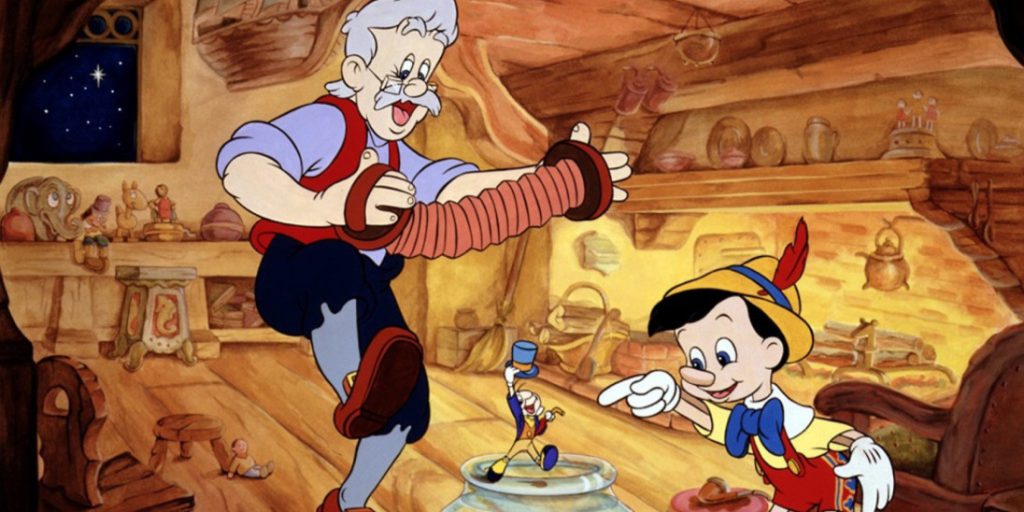
Disney also made classics such as Dumbo (1941), Bambi (1942), and The Adventures of Ichabod and Mr. Toad (1949), a double feature film that adapts Washington Irving’s “The Legend of Sleepy Hollow” and Kenneth Grahame’s “The Wind in the Willows.”
(Shout out to Tony Candelaria (NYFA Los Angeles), who worked on Del Toro’s Pinocchio!) Image via Into Film.
The 1950s
The 1950s marked the emergence of iconic Disney classics like Alice in Wonderland (1951) and Peter Pan (1953). These films, adapted from Lewis Carroll’s novel and J.M. Barrie’s play, “Peter Pan, or The Boy Who Wouldn’t Grow Up,” transported audiences to enchanting realms, showcasing Disney’s prowess in transforming literary works and plays into imaginative cinematic masterpieces.
This era also brought Cinderella (1950), Lady and the Tramp (1955), and Sleeping Beauty (1959) to our screens. Cinderella, notably, was a visually stunning story that inspired remakes and retelling, such as the 2021 film starring NYFA Guest Speaker Billy Porter.
As many of these films were adapted or started as stageplays, they continue to capture the hearts of audiences everywhere. NYFA Musical Theatre alum Ilda Mason, in fact, started her performing career in productions including “Peter Pan” and “The Beauty and the Beast” and toured nationally for “Cinderella” as an ensemble member. Corben Williams, another NYFA alum, also performed in “Cinderella” and “Beauty and The Beast.”
The 1960s
The 1960s proved to be a pivotal decade in Disney’s animation legacy, defined by the release of enduring classics such as 101 Dalmatians (1961) and Mary Poppins (1964). Mary Poppins was a delightful blend of live-action and animation featuring a magical nanny and her adventures with the Banks family. The film starred legendary actors Julie Andrews and Dick Van Dyke.
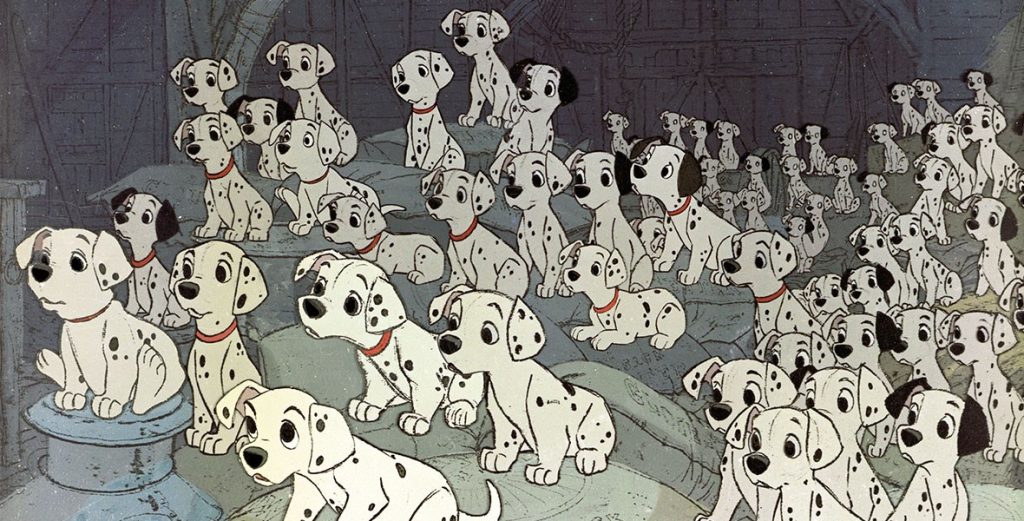
Meanwhile, 101 Dalmatians introduced an innovative, more cost-effective animation style utilizing Xerox technology for the first time. Featuring the unforgettable antagonist Cruella de Vil, this film inspired remakes and adaptations, including the live-action versions in 1996 and 2000, with NYFA Guest Speaker Glenn Close as de Vil. She also served as an executive producer for Cruella (2021), starring Emma Stone. Image via D23.
The 1970s
The 1970s in Disney animation blended achievements and hurdles. During this decade, Disney released enduring classics such as The Aristocats (1970) and Robin Hood (1973). Both offered lighthearted and imaginative films with a cast of anthropomorphic animal characters. The decade also gave audiences The Many Adventures of Winnie the Pooh in 1977, based on a collection of short films featuring the beloved characters from A.A. Milne’s Winnie the Pooh stories.
The 1980s
The 1980s signified a pivotal period of transformation in Disney animation, famously known as the “Disney Renaissance.” During this decade, the studio launched the iconic The Little Mermaid (1989), marking Disney’s triumphant return to musical storytelling and paving the way for numerous adaptations of the tale, including the recent live-action musical featuring Halle Bailey.
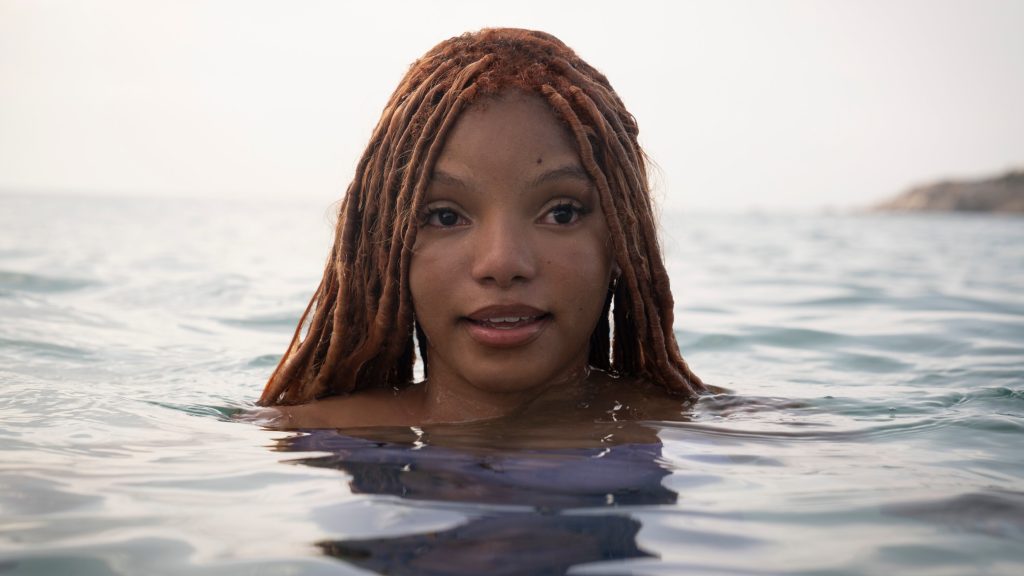
The 2023 rendition of The Little Mermaid also introduces Audre Louise Beauséjour, an alum of NYFA’s Musical Theatre program, who lends her voice to the character Ariel in the French version of the film. Ariel, Halle, and Audre collectively embody the essence of embracing your inner strength and refusing to let others’ misconceptions deter you from pursuing your dreams. Image via The New York Times.
The 1990s
Disney’s impressive lineup of highly praised films throughout the 1990s encompassed beloved classics like Beauty and the Beast (1991), Aladdin (1992), The Lion King (1994), and Hercules (1997). These movies remain among the studio’s most cherished animated masterpieces. While many of Disney’s films would go on to inspire live-action remakes, including Beauty and the Beast and The Lion King, Hercules remains in classic status. Aladdin and The Lion King were also adapted into Broadway musicals. NYFA Musical Theatre alum Pierre Marais was in the Broadway production of Aladdin at New Amsterdam Theatre.
Personally, we think that many of NYFA’s acting alum would be great for a live-action remake of the humorous take on Greek mythology.
The ‘90s also brought us down under with a sequel to The Rescuers (1977), starring film legends Eva Gabor and Bob Newhart. The Rescuers Down Under (1990) takes audiences to the animated Australian outback to rescue a young boy named Cody and a rare golden eagle. An early animated depiction of Australia, one of the top film and entertainment industries, The Rescuers Down Under continues to be a cherished memory for many Disney fans.
The 2000s
The 2000s through the 2010s marked a renaissance for Disney animation, with a string of highly successful films that brought us to far-off places, real and imaginary. The Emperor’s New Groove (2000), which takes place in Peru, stands out as a distinctive and comical departure from Disney’s traditional animated offerings and tells the story of the transformation of Emperor Kuzco into a llama. The film’s irreverent humor and quirky characters continue to inspire dedicated fans who create TikToks paying homage to its memorable scenes.
Cars (2006), starring Owen Wilson, Bonnie Hunt, and NYFA Guest Speaker Carl Weathers, is a heartwarming film that takes audiences to the small town of Radiator Springs. 2007 brought us to Paris with Ratatouille with the tale of Remy, a French rat with big aspirations. The movies’ unique blends of humor, memorable characters, and impressive animation have made them beloved additions to Disney’s lineup.
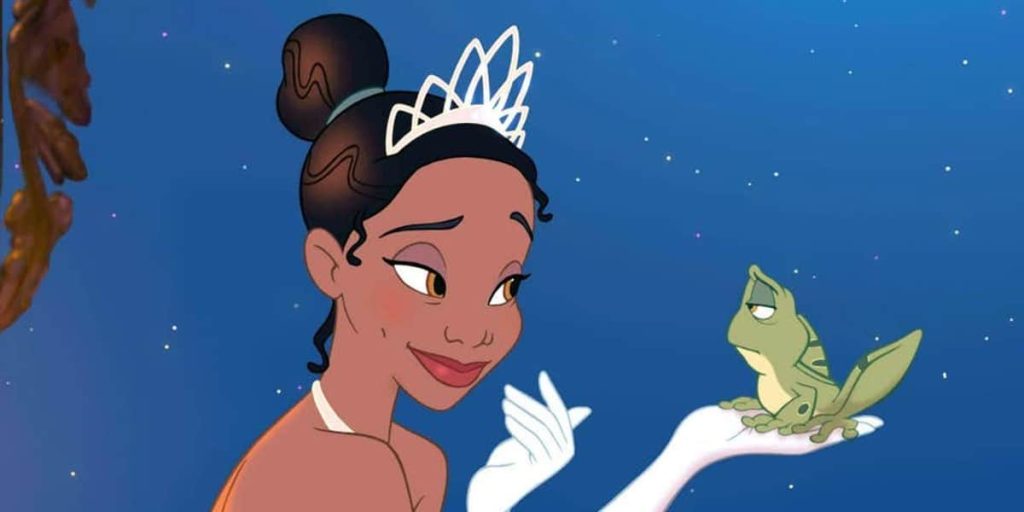
The Princess and the Frog, released in 2009, signified Disney’s reemergence in traditional hand-drawn animation as the enchanting tale unfolds in the vibrant backdrop of New Orleans. Tiana, the protagonist, was Disney’s inaugural Black princess, offering crucial representation to audiences. Image via Inside The Magic.
2009 was also the year that Disney acquired Marvel Studios, leading to future hits like Doctor Strange in the Multiverse of Madness (2022), starring NYFA Guest Speaker Elizabeth Olsen, to emergence into television with shows like SheHulk: Attorney at Law, featuring a hit cast that includes Acting for Film alum Michel Curiel. Disney’s acquisition and the hard work of Marvel directors like NYFA Guest Speaker Jon Favreau, and Marvel-producing powerhouse, NYFA Guest Speaker Kevin Feige, promise to keep the multiverse alive.
The 2010s
The 2010s were characterized by Disney’s ongoing growth and diversification in animation. In 2012, Disney acquired Lucasfilm. Lucasfilm went on to expand the Star Wars universe with films like Star Wars: The Force Awakens (2015), starring NYFA Guest Speaker Adam Driver. This era also witnessed blockbusters such as Frozen (2013), adapted into a hit musical, and the live-action film Into the Woods.
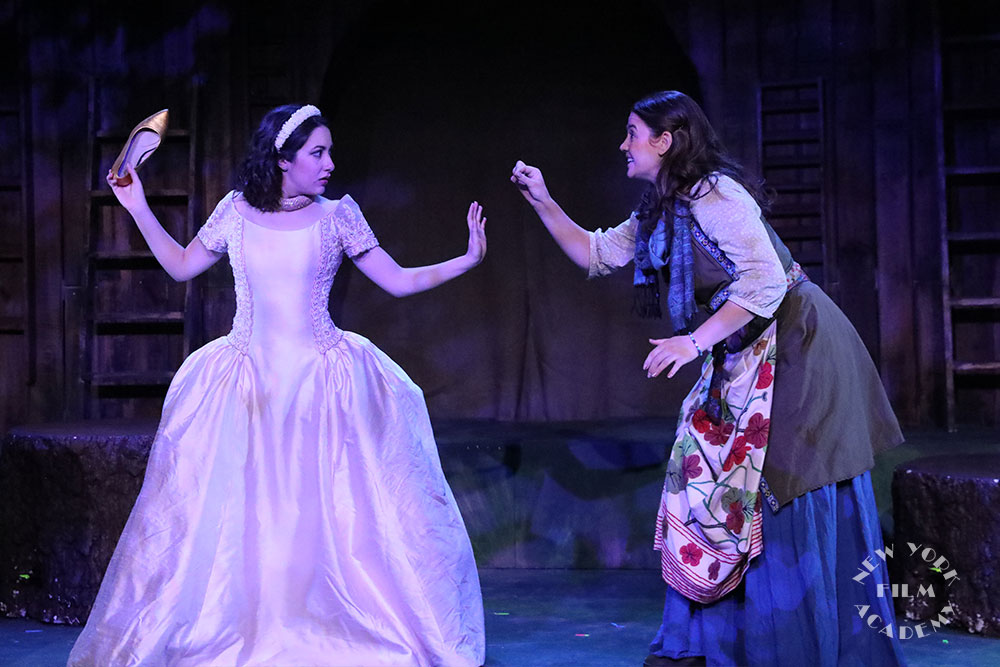
The 2014 version brought the beloved musical to the screen, intertwining classic fairy tales with a star-studded cast and stunning visuals. (Pictured above: NYFA’s Musical Theatre School’s performance of Into The Woods.)
The release of Moana in 2016 extended a cultural invitation to Polynesian traditions through compelling storytelling, memorable music, and a resolute heroine. In 2016, Disney released Zootopia (2016), a surprise hit returned to the world of animals. Animator Darrin Butters, an animator for all of Walt Disney Animation Studios’ top hits, including Big Hero 6, Frozen, and Tangled, provided the New York Film Academy 3D Animation School with an exclusive behind-the-scenes look at Zootopia before its release.
Disney also experienced remarkable success with the CGI-animated live-action adaptation of Disney’s The Lion King (2019). This remake featured Beyoncé as Nala, Donald Glover as Simba, and NYFA Guest Speaker Seth Rogen as Pumbaa. NYFA alum Guillermo Quesada worked on the team of VR and AR developers for the film. This decade also marked Disney’s controlling interest in National Geographic, making it possible for visual storytellers from all crafts, such as documentary filmmakers and photographers, to bring their stories to life. NYFA Photography alum Jon Henry was featured in the October 2020 issue of National Geographic, and NYFA Documentary Filmmaking graduate Lucía Flórez was awarded the prestigious National Geographic Explorer grant for Shirampari, a film about indigenous Amazonian fishermen.
The 2020s
The 2020s continued the important work of cultural representation in their films with the release of Encanto (2021). The film, based in Colombia, is a captivating animated film that transports viewers to a magical village in the Colombian countryside. Revolving around Mirabel, the only member of her family without special powers, the audience follows as she embarks on a quest to save her home from a mysterious threat. With vibrant cultural elements and a heartwarming message, Encanto has resonated with audiences and offered a unique cinematic experience. Films like Turning Red (2022) followed the success of Encanto and Moana, bringing forth necessary Asian representation.
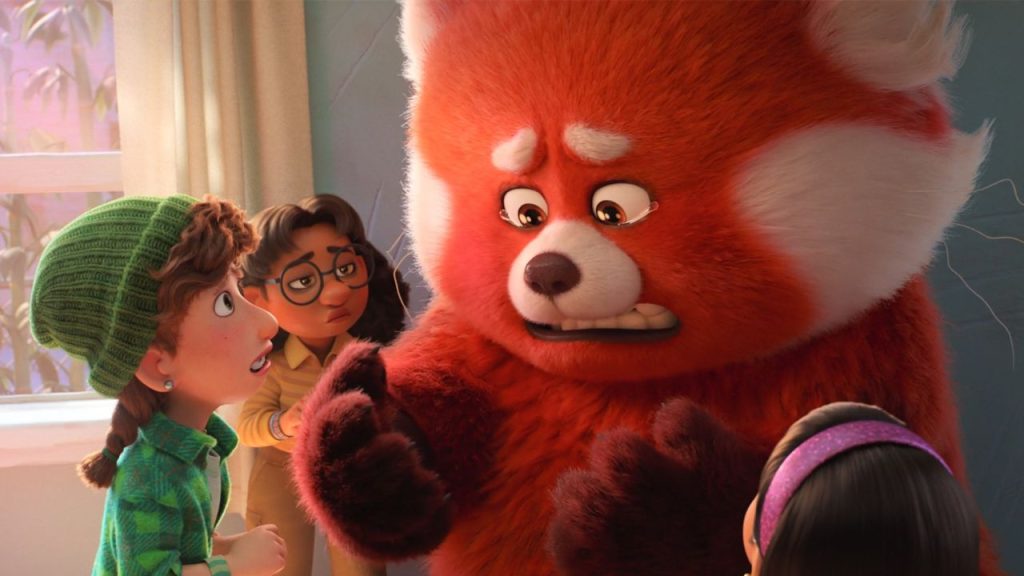
In 2022, Disney also explored the world of films like Toy Story, creating a spin-off/prequel titled Lightyear. Lightyear, the story of a young Buzz stranded on a hostile planet with his commander and crew, was a creative take on one of their most popular franchises. The film featured work from NYFA BFA Filmmaking alum Raquel Bordin. Disney continued experimenting with television and streaming with Moon Knight, also released in 2022 on Disney Plus. The Emmy-winning show, which delves into the adventures of Marc Spector, was directed by NYFA Screenwriting alum Mohamad Diab. The show was celebrated for its representation of Arabic characters. Image via CNN.
Create Your Own Movie Magic at NYFA
Whether you’re ready to head to the stage or screen or create your own worlds in 3D Animation, Disney can be an example of exemplary storytelling. To learn more about acting, musical theatre, 3D animation, filmmaking, and more, explore our programs.